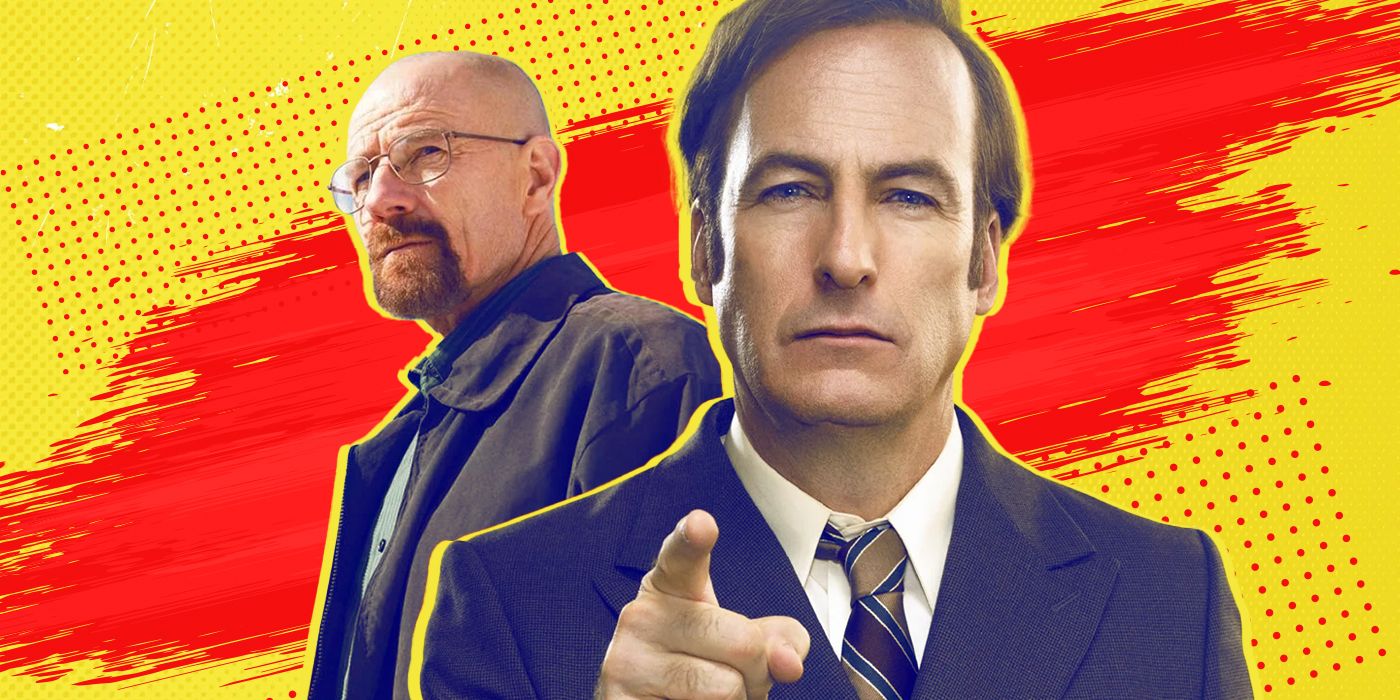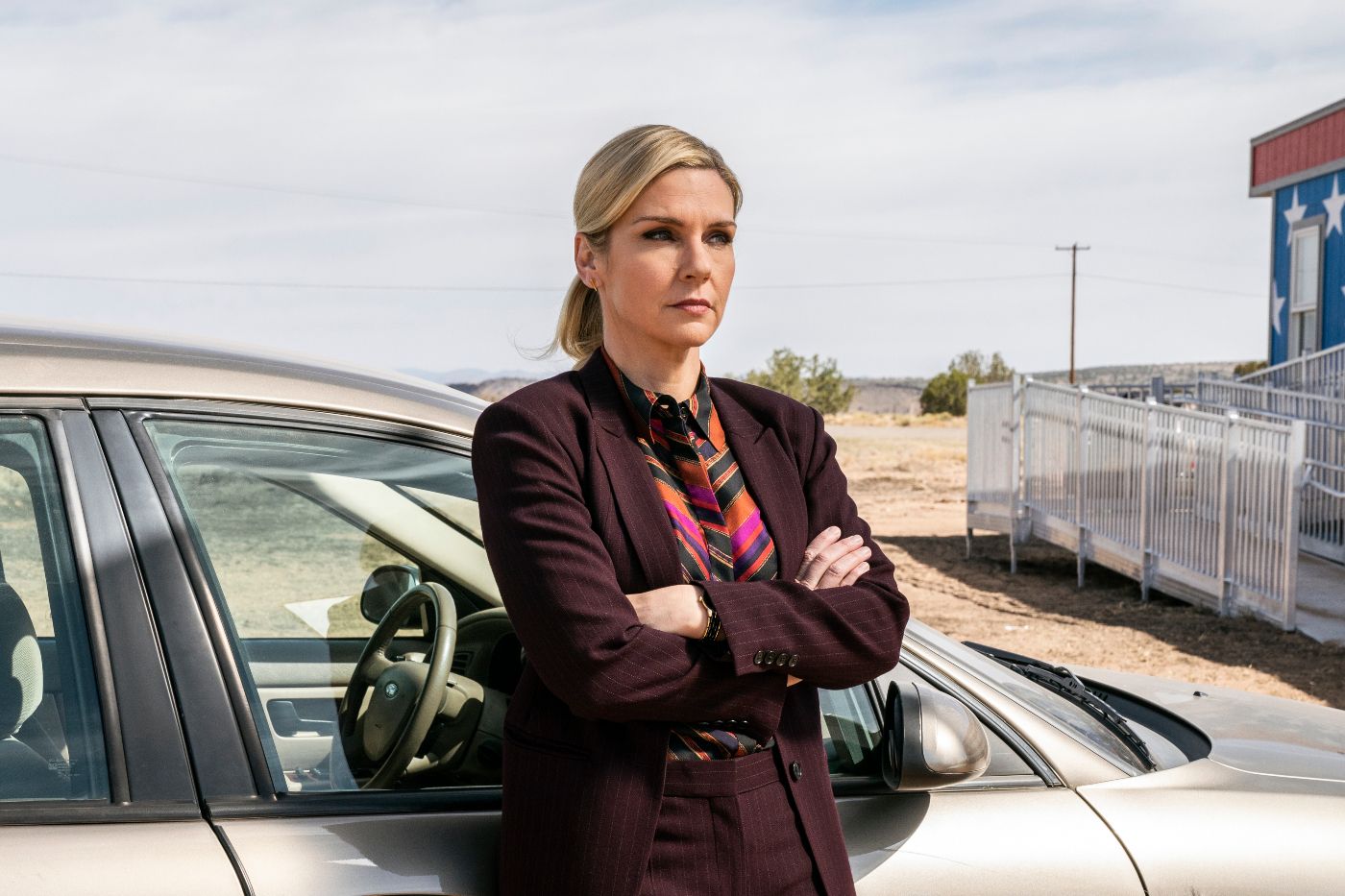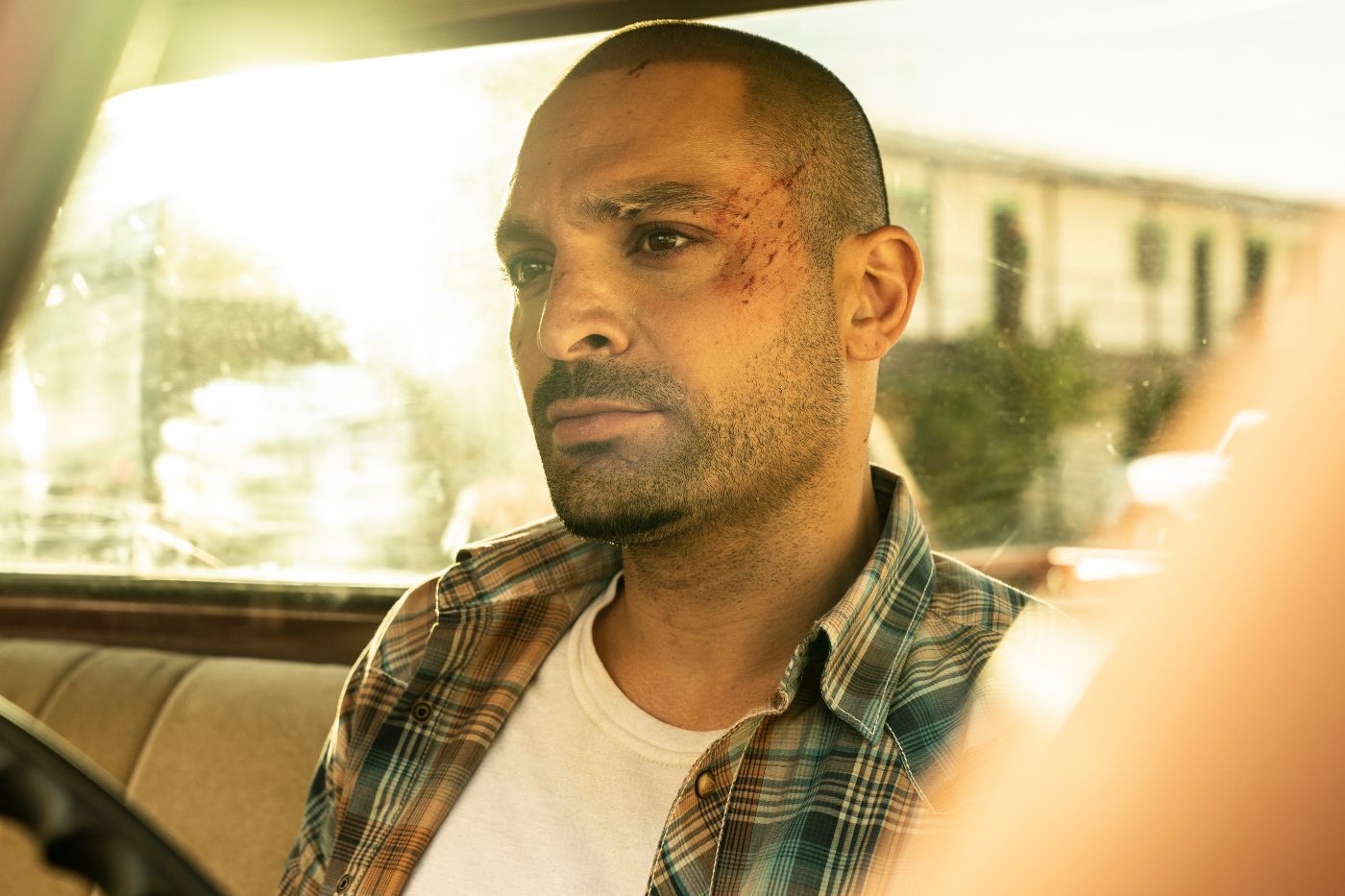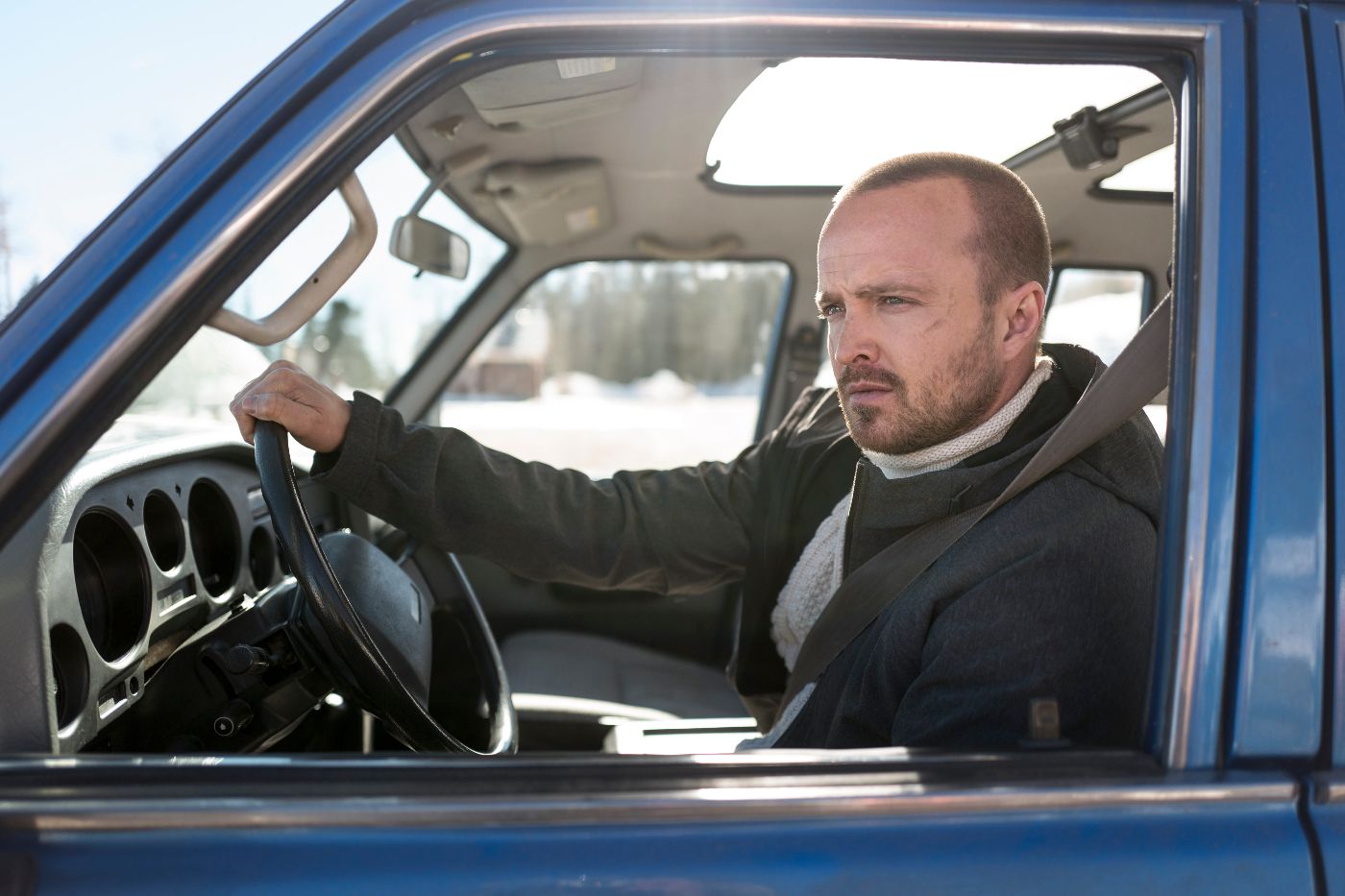Better Call Saul has ended, and it is a magnificent achievement to be celebrated. Even more impressive is when you take a step back to view the series as one piece of the broader storytelling tapestry Vince Gillian and Peter Gould wound as a part of their Breaking Bad-verse. Now that Gilligan and Gould have stuck the landing, it’s time to acknowledge what they achieved over the last 15 years with Breaking Bad, El Camino, and now Better Call Saul is the most impressive feat of long-form storytelling ever seen on American television.
No other TV creators have successfully (and single-handedly) revisited the same world repeatedly with such consistent and complementary results. Each time they brought us back to Albuquerque, Gilligan and Gould produced stories and characters that never felt repetitive or derivative and actively conversed with the original series and each other (as opposed to standing apart).
Kim Wexler Exemplifies the Franchise's Biggest Themes
Take Kim Wexler (Rhea Seehorn) in Better Call Saul — a character who reinforced the Breaking Bad-verse’s central themes and quickly became a fan favorite (rightfully so; if Seehorn doesn’t take home an Emmy next year, we all should take up arms). She was Jimmy/Saul’s (Bob Odenkirk) love interest and his perfect foil. Where she was meticulous, he shot from the hip; her worshipful esteem for the law matched only by his outrageous contempt for the rules.
Most importantly, she was Jimmy’s heart when he had none: the only person in his life close enough to simultaneously partake in and react with horror to his descent into moral corruption throughout the series. In this sense, Gilligan and Gould masterfully use her to fulfill the same role Jesse Pinkman (Aaron Paul) did in Breaking Bad. Jesse and Kim serve as avatars for the audience (we’re both along for the ride even if we want to look away) and as thematic devices to drive home the same central lesson of the Breaking Bad-verse: all choices have consequences. Both characters suffer heartbreaking, unnecessary deaths of friends or loved ones as the indirect results of their amoral actions: Howard Hamlin (Patrick Fabian) for Kim and Jane Margolis (Krysten Ritter) for Jesse. Eventually, the cumulative weight of these consequences causes Kim and Jesse to decide to get out of the game altogether to salvage their souls. Each of them finally internalizes the lesson Walter White (Bryan Cranston) and Jimmy never learn, the failure of which ultimately leads to both men’s demise.
Characters Like Nacho and Mike Struggle With Their Morality
Gilligan and Gould use their world to draw similar cross-series parallels between Better Call Saul’s Nacho Varga (Michael Mando) and Breaking Bad-verse fixture Mike Ehrmantraut (Jonathan Banks). Whereas Kim and Jesse debate their decisions in solitude, the creators paint Varga and Mike’s struggle with the morality of their actions through the lens of how they balance their life of crime with their familial relationships. Varga is driven into crime to build a better life for himself and his family than his working-class father ever could. This choice creates a wedge in his and his father’s relationship until they’re barely on speaking terms, as his straight-and-narrow father begins to recognize there is only one way his son could be supporting his lifestyle. This pains Mike, who recognizes Varga’s struggle as a parallel of his own only in reverse. In Breaking Bad, we learn that Mike’s motivation to work for Gus Fring (Giancarlo Esposito) is to provide money for his granddaughter. In Better Call Saul, Gilligan and Gould reveal Mike has a more profound sense of moral obligation that drives his motivation. As a corrupt cop in Philadelphia, he participated in a system that tragically claimed his son’s (and granddaughter's father’s) life. As such, he justifies crimes to provide for her, which, in his mind, helps to absolve prior sins.
Their mirrored experiences and motivations intersect throughout the two series to reinforce another core theme of Gilligan and Gould’s creations: pure motivations do not wash dirty hands clean. And the men who do those deeds, however well-intentioned, must suffer the consequences they have wrought. Mike concedes to embodying this truth throughout the two series but acknowledges he’s too far along to step off of the immoral path he’s put himself on (even if he realizes it can only lead to one place). It pains Mike when he sees Varga do the same in Better Call Saul at the expense of his relationship with his father, a brutal continuation of the same cycle that haunts his life. This parallel makes Varga’s eventual death at the hands of the Salamancas all the more tragic and, to Gilligan and Gould’s credit, narratively fulfilling.
'El Camino' Serves as a Commentary on Making Amends
Gilligan and Gould repeatedly use their intertwining narratives to explore the same question: how can one make amends for past wrongdoings and start over? Jesse Pinkman’s feature-length epilogue in El Camino is one extended rumination on this pillar of the Breaking Bad-verse. As Jesse spends the film in a cat and mouse game with the law and other elements of the criminal underworld, Gilligan and Gould choose to bookmark the film with three flashbacks where Jesse examines the subject with other characters. The film opens with Jesse telling Mike his desire to start over, who cautions that a fresh start would be close to impossible. Later, he remembers a conversation where Walt, reflecting on his own wasted potential, tells Jesse he’s lucky to have the chance to do something special with his life (and that he shouldn’t waste the opportunity). The film closes with one last flashback to a conversation with Jane. After Jesse explains his admiration for her free spirit, or as she puts it, “going wherever the universe takes her,” she shrugs the sentiment off as symbolic and encourages him to make his own decisions. With this thought, the film concludes as Jesse drives into the Alaskan wilderness, smiling at the prospect of a fresh start.
This last topic is an obsession of Gilligan and Gould’s: their fictional world full of characters repeatedly attempting the same rebirth and mea culpas, each time exploring the essential question differently. In Breaking Bad, Walter first flees to Alaska to start over, trying to escape from the law and his sins. When he decides to come out of hiding to free Jesse, he completes a successful act of martyrdom that also serves as a form of apology for his damage to Jesse’s life. Towards the end of Better Call Saul, we see Kim has spent the better part of the decade following the series' events in Florida. Here she endures a sort of masochistic atonement for her complicity in Jimmy/Saul’s crimes (complete with a lackluster job and a doofus of a boyfriend who repeatedly squawks “yup” during sex). She, too, comes back from hiding for an act of martyrdom — this time via an in-person confession to the police and Howard Hamlin's widow that she was culpable in Howard’s death. Then there’s Jimmy/Saul’s final courtroom confession in the finale of Better Call Saul, the ultimate conclusion to the Breaking Bad-verse, and another attempt by a Gilligan/Gould creation to apologize for their sins. Jimmy/Saul manufactures an opportunity to lay out his responsibility for the events of Breaking Bad and Better Call Saul in a dramatic fashion, not just for the courts of Albuquerque but, more importantly, for Kim, who watches on in the audience. He, too, sacrifices himself as an act of atonement and apology to Kim, opting for life in prison during the process rather than the seven-year deal he had previously negotiated.
Yet, if you ask Gilligan, he scoffs at the idea he planned this sprawling narrative opus. Ever the pinnacle of humility, he recently said,
“That’s why interviews like this are dangerous, because I tend to wax on about, “Gee, this is what it really meant.” And I’m just as full of crap as anybody. I’m probably less able to tell you what it all means than someone else who’s looking at it from a distance. What I can tell you is that a lot of the stuff people read into these shows was stuff that was not on our minds when we made them.”
Whether intentional or not, it doesn’t change the fact that what Gilligan and Gould accomplished these last 15 years is a remarkable feat. Despite the challenge of multiple productions, actors, timelines, and settings, they created distinct and complementary stories that meditated on the same resounding central themes a hundred times over with a steady hand. Whereas other TV franchises have fumbled the ball as they relentlessly mined IP with diminishing returns, Gilligan and Gould’s harmonious interlaced narratives are a thoughtful examination of choice, consequence, and rebirth built on a bedrock of television fundamentals. Fully-formed characters like Kim Wexler and Gus Fring, iconic dialogue like Walt’s “I Am The One Who Knocks” monologue, and tragic spectacles like the death of Jane Margolis or the joint grave of Lalo Salamanca (Tony Dalton) and Howard Hamlin. Gilligan and Gould have been vocal that this is officially the end of the Breaking Bad-verse, and it’s no surprise (two people responsible for a slew of characters who never know when to quit know when to cash out). We should be endlessly grateful we got as much time in Albuquerque as we did. It’s unlikely we’ll see such profoundly impressive, congruous television again.




